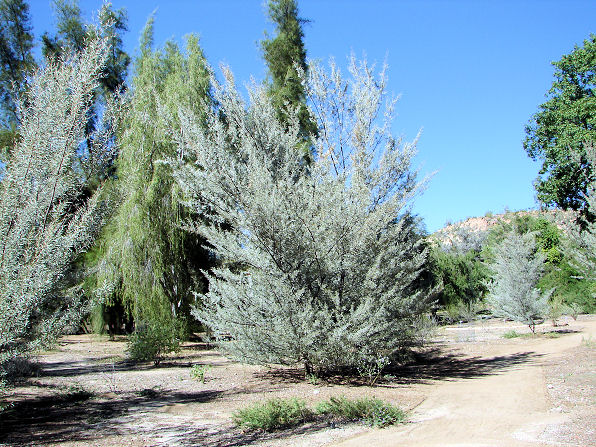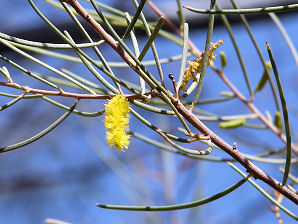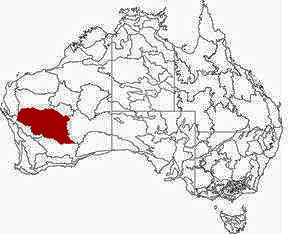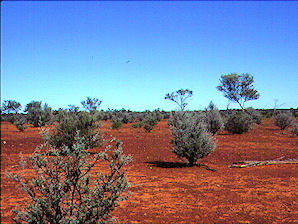Xeriscape Landscaping Plants For The Arizona Desert Environment.
Pictures, Photos, Information, Descriptions,
Images, & Reviews.
Trees.
Mulga Acacia Trees, Acacia aneura.
We Are Proud Of Our SafeSurf Rating!
Click On Any Of The Following Links By Amazon.Com
For Books, & Videos About Wildflowers Of Arizona & The Southwest USA. No Obligation!
 |
| Mulga Acacia, Acacia aneura. Desert Botanical Garden of Phoenix Arizona. Photo September 6, 2006. |
|---|
 |
| Mulga Acacia, Acacia aneura. Boyce Thompson Arboretum Near Superior, Arizona. Photo October 11, 2006. |
 |  |
| Mulga Acacia. Acacia aneura. | Mulga Acacia. Acacia aneura. |
|---|---|
 | |
| Mulga Acacia. Acacia aneura. The Australian Region Called Gascoyne. Courtesy: Wikipedia. | Mulga Acacia. Acacia aneura. The Australian Region Called Murchison. Courtesy: Wikipedia. |
 |  |
| Mulga Acacia. Acacia aneura. Native Australia Outback. Courtesy: Wikipedia. | Mulga Acacia. Acacia aneura. Native Australia Outback. Courtesy: Wikipedia. |
Mulga Acacia Trees.
We wish to thank Wikipedia, the free encyclopedia for some of the information on this page. We share images and information with Wikipedia. Acacia aneura, commonly known as mulga or true mulga, is a shrub or small tree native to arid outback areas of Australia, such as the Western Australian mulga shrublands. The Western Australian Mulga shrublands is a large dry World Wildlife Fund ecoregion of inland Western Australia This is a hot, dry area with little rainfall. The region consists of the Gascoyne, and Murchison bioregions of the Interim Biogeographic Regionalisation for Australia (IBRA). We have placed maps of these regions with actual photos of the regions near the end of our photos on this page. The predominant vegetation are the Mulga Trees, a type of acacia adapted to the hot, dry climate by means of using long tap roots to get water. In some areas the mulga trees are surrounded by Eriachne grassland. The wildlife of the region includes birds such as emus, Australian Bustards and honeyeaters. Most of the area is uninhabited but there is some mining activity and some sheep grazing in the region, It also is native to all of the other mainland states of Australia, where it grows in low rainfall areas and in most soils, including clay. Acacia aneura is very unusual since it has what is called an open flowering cycle That means that once the trees start blooming and then stop blooming; another blooming cycle will begin, after it is finished, another blooming cycle witll begin, etc..This usually will continue throughout 3 or 4 cycles per year. The heavest bloom will usually be during the winter, since that is following a warm summer. Usually there are some heavy rains in Australia during the summer. Sort of like what happens in Arizona. Swimming pool friendly.
Quick Notes:
Height: Up To 20 feet tall, 10 - 14 feet spread.
Trunk: 3 to 14 inches in diameter.
Bark: Redish-brown, finely furrowed bark.
Flowers: Golden yellow rod - shaped and puffy, 3/4 to 1 inch long; 1/8 - 1/4 inch diameter, bloom in spring.
Blooming Time: Early March - April.
Seed Pod: Seedpods, flat oblong, reddish or brown, 1 to 1 1/2 inch long.
Seeds: Dark brown or black, hard.
Leaves: Linear, 1 - 3 inches long, silver - gray in color.
Found: Native to arid outback areas of Australia, such as the Western Australian mulga shrublands. The USDA claims it is native of the USA (HI).
Elevation: Native below 984 feet.
Hardiness: We have read reports of it dying at a three day freeze of 16 �F.
Soil pH requirements:
Sun Exposure:
Habitat: Rocky hillsides, alluvial plains, canyon slopes, and hillsides. Xeriscape ornamental in lower elevations in the Phoenix and Tucson areas of Arizona.
Miscellaneous: Photos Taken At October 11, 2006. Boyce Thompson Arboretum, near Superior, Arizona. Other photos taken September 6, 2006 in the Desert Botanical Garden of Phoenix Arizona. A low water use landscaping plant in the Phoenix and Tucson areas.
|
We Are Proud Of Our SafeSurf Rating!
Click On Any Of The Following Links By Amazon.Com
For Books, & Videos About Wildflowers Of Arizona & The Southwest USA. No Obligation!
| © 1966 - Present, Audrey, Eve, & George DeLange |
